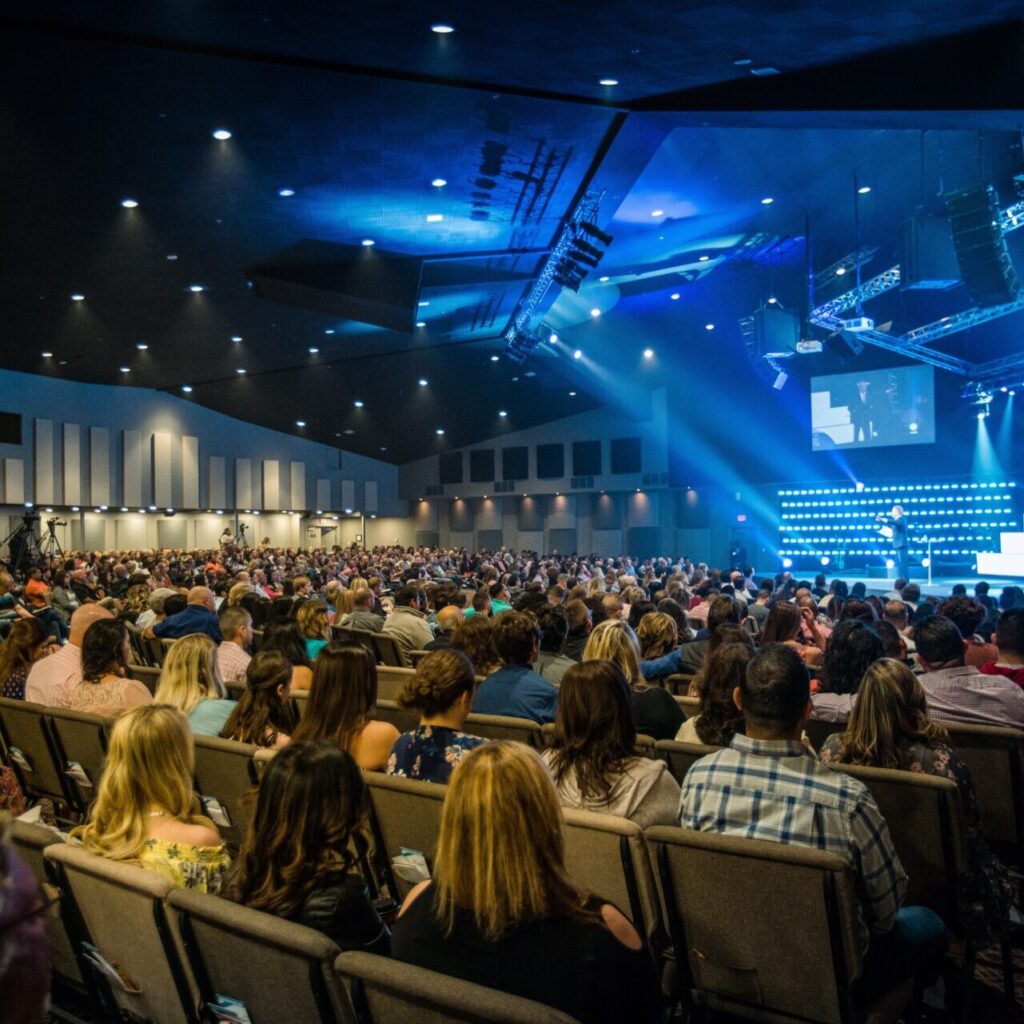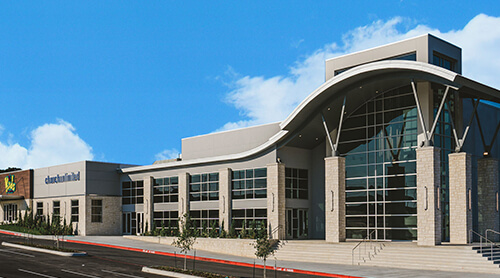A well-designed church lighting plan is instrumental in fostering an inviting and engaging worship experience, guiding your congregation’s spiritual journey, and enhancing the aesthetic ambiance of your sacred space. By thoughtfully selecting and integrating lighting fixtures, control systems, and energy-efficient solutions, you can create a visually appealing and welcoming environment that complements and elevates your worship services.
This comprehensive checklist, expertly crafted by Messenger AVL, will guide you through the essential steps of designing and implementing an ideal lighting plan for your church. Covering key aspects such as fixture types, placement strategies, control options, and energy efficiency considerations, this resource is designed to simplify the process and ensure your church’s lighting meets the unique needs of your congregation and worship space.
With the support of our experienced AVL professionals, serving churches in Georgia, your church can create an awe-inspiring lighting plan that effectively enhances your spiritual message, engages your congregation, and contributes to a transformative worship experience.
Determine Your Church’s Lighting Needs
The first step in crafting the perfect church lighting plan is to assess your church’s specific needs, keeping in mind your worship space, congregation size, and intended ambiance. This evaluation should involve consulting with your pastoral team, worship leaders, and technical staff, collectively identifying the various lighting needs for different aspects of your worship services, special events, and architectural features.
Select the Right Types of Fixtures
There are multiple types of light fixtures suitable for various purposes within a church setting. Consider the following options when designing your church lighting plan:
1. Ambient lighting: This type of illumination provides general, uniform lighting throughout your worship space, ensuring congregants can comfortably and safely navigate the space. Recessed or pendant fixtures, using LED or fluorescents, can be an excellent choice for ambient illumination.
2. Accent lighting: Accent lighting is used to highlight specific architectural features, art pieces, or focal points of your worship space. Wall sconces, uplights, and track lights are popular options for creating these visually striking accents.
3. Task lighting: This lighting type helps facilitate specific tasks, such as reading or playing a musical instrument. Desk lamps or stand lights are often utilized for task lighting, especially around the pulpit and musician areas.
4. Stage lighting: Stage lighting is crucial for creating visual interest, depth, and emphasis during worship services and performances. There are several fixture types to consider, including spotlights, wash lights, ellipsoidal reflector spotlights (ERS), and moving-head fixtures.
Plan Fixture Placement for Optimal Effect
Achieving optimal lighting effects requires strategic fixture placement. Consider the following guidelines when positioning your church’s light fixtures:
1. Balancing ambient and task lighting: Ensure you create an even balance between ambient and task lighting, allowing worshippers to navigate the space easily while still engaging in activities that require focused illumination.
2. Stage lighting angles: To create depth and visual interest on your stage or altar area, use multiple lighting angles, such as front, side, and top lighting, to produce the desired effect.
3. Avoiding shadows and glare: Proper fixture positioning can help minimize undesirable shadows or glare, making your worship environment more visually appealing and comfortable for congregants.
4. Highlighting architectural features: Enhance your church’s unique architectural elements, such as vaulted ceilings, stained-glass windows, or exposed beams, by strategically placing accent lighting to emphasize these features.
Choose Control Options for Your Church Lighting
The right control system for your church lighting can make it easy to manage, offering customized settings for various worship services and events. Consider these control options when designing your church lighting plan:
1. Dimmer controls: Dimmable fixtures can provide your worship space with flexibility in adjusting ambient lighting levels to suit various service components, such as moments of contemplation, prayer, or high-energy worship music. Dimmer controls can be either wall-mounted or integrated into a larger lighting control system.
2. DMX lighting controller: A DMX lighting controller allows your tech team to manipulate individual lighting fixtures with precision, creating dynamic and customized lighting effects across your entire worship space.
3. Smart lighting control apps: More advanced lighting systems often offer smartphone or tablet apps for wireless control, giving you the freedom to adjust settings without being tethered to a single control point.
4. Automated lighting presets: For a seamless lighting experience during your worship services, consider programming presets for various service elements, enabling your tech team to transition between lighting scenes with ease.
Prioritize Energy Efficiency
Incorporating energy-efficient lighting into your church’s plan is not only environmentally responsible but can also lead to significant cost savings over time. To maximize energy efficiency, consider the following:
1. LED fixtures: LED lighting technology is known for its energy efficiency, longevity, and low heat output, making it an ideal choice for churches. When selecting LED fixtures, consider the color temperature and color rendering index (CRI) to ensure they meet your specific lighting needs.
2. Occupancy sensors: These devices automatically turn off lights when areas of your church are unoccupied, reducing energy consumption and operating costs.
3. Timers: Timers can be used to control exterior lighting, ensuring that lights turn off after a specified period or based on daylight hours, saving energy and reducing operating expenses.
4. Periodic maintenance: Regular maintenance and cleaning of your church’s lighting system, including bulbs, fixtures, and control equipment, can help maximize energy efficiency and prolong the system’s lifespan.
Illuminate Your Worship Space With an Expertly Designed Church Lighting Plan
Investing in a well-designed and meticulously planned church lighting system is essential for creating an inviting, engaging, and uplifting worship environment. By assessing your church’s unique needs, carefully selecting appropriate fixtures, strategically planning fixture placement, incorporating versatile control options, and prioritizing energy efficiency, you can enhance the spiritual journey of your congregation and elevate your worship experience to new heights.
Enlisting the expertise and guidance of AVL professionals such as Messenger AVL, serving churches in Georgia, will ensure your custom church lighting plan not only reflects your ministry’s vision but also strikes the perfect balance between aesthetics, functionality, and cost-effectiveness. Our dedicated team will provide ongoing support every step of the way, from initial consultations to fixture selection, installation, maintenance, and beyond.
Illuminate your worship space with a custom church lighting plan by Messenger AVL. Contact our expert team today to discuss your church’s lighting needs and start planning your ideal church lighting solution!



